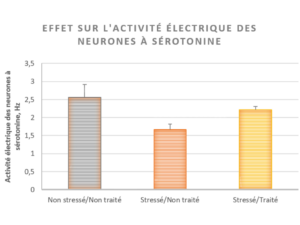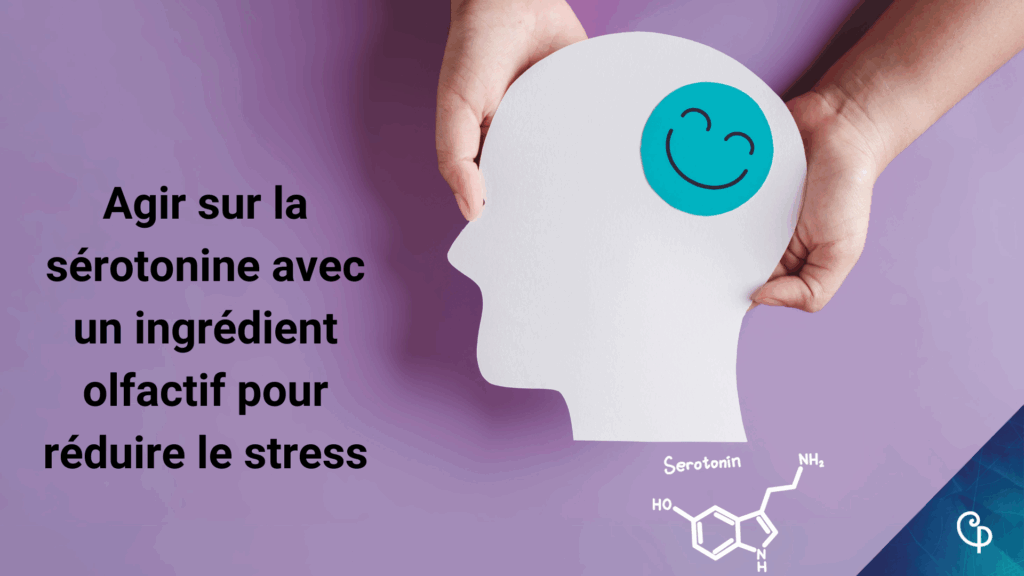Well-being and smell are closely linked. The sense of smell is directly linked to the brain and the perception of an odour leads to a cascade of reactions in the brain, physiology and emotions. At Phodé, we harness the power of olfaction by offering olfactory active ingredients for the well-being of living beings.
Smell to feel better
How can an olfactory active ingredient have an anti-stress effect? Smells and emotions are closely linked. For example, the loss of smell in some forms of long-onset COVID leads to a state of profound sadness, sometimes even depression. Why? Because sufferers lose their sense of smell: it’s the smell of the food they enjoy eating, or the smell of themselves when they use cosmetics to look after themselves. A scientific experiment conducted on a mouse model showed that if the olfactory bulbs were removed from rats, they behaved in a depressive manner 1.
Emotion plays a predominant role in our stress mechanism.
Stress is the body’s physiological reaction to an event or environment perceived as negative or at least unexpected by an individual. Faced with a stressful agent, our reptilian brain sounds the alarm. This automatically triggers the stress mechanism with an emotional reaction such as fear or sadness, but also has physiological consequences: the heart speeds up, muscular tension appears and flight or withdrawal behaviour is triggered.
Know more about stress : https://www.phode.com/en/stress-the-number-one-enemy-of-well-being/
Serotonin: the 1st neurotransmitter involved in managing emotions
The scientific investigations carried out by our researchers have led them to study the smallest structures present in the brain: neurons. These are nerve cells that transmit information in the form of an electrical signal. To communicate with each other, neurons need neurotransmitters, small chemical molecules that stimulate or stop the nervous message. Serotonin is the No. 1 neurotransmitter in the transmission of emotions. In stressful situations, serotonin protects the body against negative emotions such as fear or sadness and impulsive behaviour that puts us at risk, such as aggression. Its receptors are located in the emotional brain, the limbic system and the amygdala. It is known to be involved in depression, as antidepressant drugs often target it by limiting its destruction.
An olfactory active ingredient to manage stress
In the course of our research, we demonstrated the effect of one of our olfactive ingredients on serotonin neurons. The study was carried out on a mouse model2 ; The animals had either been subjected to stress or not. Stress was induced by continuous administration of the stress hormone corticosterone in mice. Under stress, some of the animals received the active substance and others a placebo via retro-olfactory administration of drinking water. The electrical activity of serotonin neurons in the animals’ brains was measured.
This graph shows the results for the three types of condition:
- in grey, we have the electrical activity of serotonin neurons in non-stressed mice that have not been exposed to one of our active ingredients via the retroolfactory route, which is the basic, healthy condition.
- the hatched orange area shows the response of neurons in stressed mice that had not been exposed to the active ingredient.
- yellow shows the response of neurons in stressed mice that received the active.
Under stress: we compared the results of the groups represented in grey and orange and found a decrease in the electrical activity of serotonin neurons.
With active, the activity is exactly the same as in the absence of stress.

In this study, it was shown that stressed mice exposed to the olfactory compound regained normal serotonin activity. This clearly demonstrates the effectiveness of the olfactory compound in stress management.
1Jancsár, S., Leonard, B.E. (1983). The olfactory bulbectomized rat as a model of depression. In: Usdin, E., Goldstein, M., Friedhoff, A., Georgotas, A. (eds) Frontiers in Neuropsychiatric Research. Palgrave Macmillan, London. https://doi.org/10.1007/978-1-349-06689-6_25
2Coutens B, Rekik K, Harster A, Etienne P, Noirot V, Frances B, Moulédous L, Guiard BP. A Citrus Based Sensory Functional Food Ingredient Induces Antidepressant-like Effects: Possible Involvement of an Interplay between the Olfactory and the Serotonergic Systems. Neuroscience. 2020 Dec 15;451:149-163. doi: 10.1016/j.neuroscience.2020.09.040. Epub 2020 Oct 9. PMID: 33039523.





